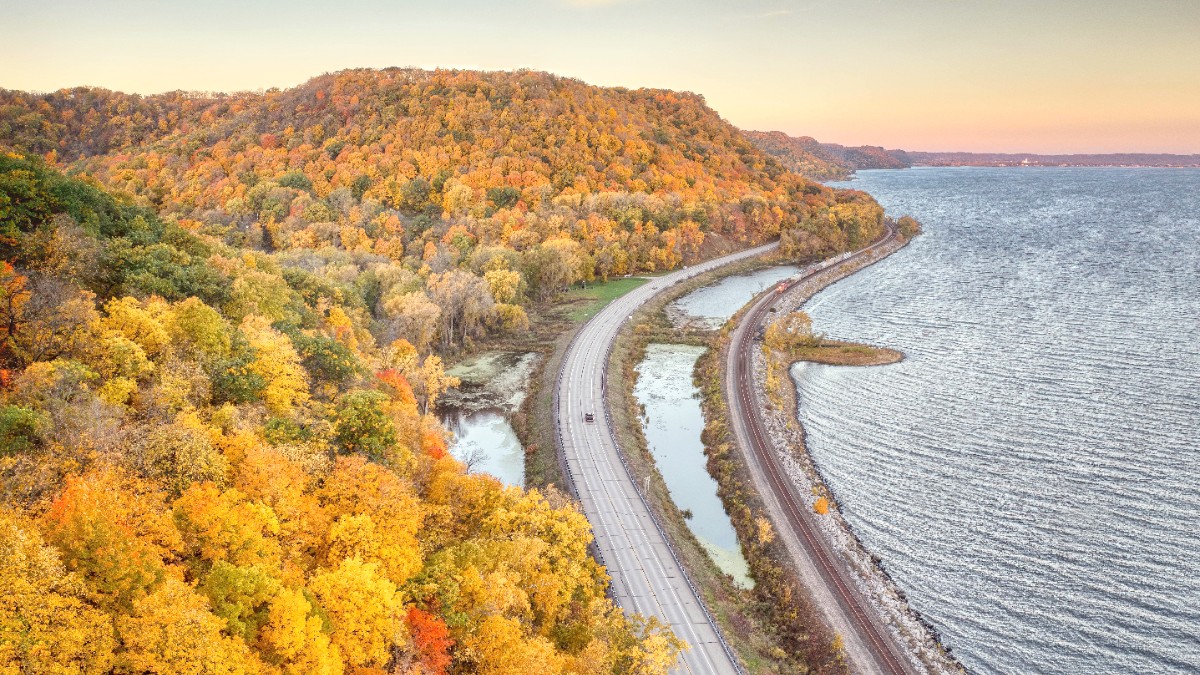
Great Lakes, USA
These sites are central to understanding Minneapolis, from its industrial past to its arts scene.
Each landmark offers an unique perspective and opportunity for exploration.
These sites collectively portray Minneapolis's blend of natural beauty, industrial innovation, and cultural depth.
Renowned regional theater, world-class productions, "Endless Bridge" with stunning views.
Orpheum, State, and Pantages host touring Broadway, major concerts, comedy.
Iconic music venue linked to Prince, hosts countless influential musicians.
Private galleries and smaller exhibition spaces in North Loop and Northeast Arts District feature local and regional artists.
Museums often have rotating exhibits, lectures, workshops, and family-friendly events. Check websites for current schedules.
Minneapolis's history is preserved and celebrated in numerous sites across the city, offering glimpses into its past.
Area around Stone Arch Bridge and Mill City Museum, rich with industrial ruins and historical markers detailing development.
Former warehouse district with impressive historic industrial architecture, now trendy shops and restaurants.
Reconstructed 1820s military fort at the confluence of the Mississippi and Minnesota rivers. Offers living history demonstrations.
First basilica in the United States, stunning Beaux-Arts architecture, offers tours and a peaceful respite.
Located at 38th Street and Chicago Avenue, a powerful and evolving unofficial memorial site for remembrance.
The prime example of preserving Minneapolis's industrial heritage, vividly portraying the history of flour milling.
The St. Anthony Falls area is a site of significant industrial archaeology, revealing layers of the city's development.
From the Beaux-Arts style of the Basilica to the repurposed industrial structures of the North Loop, history is visible in the city's buildings.
Minneapolis takes pride in preserving its past, allowing visitors to connect with the narratives that shaped the city.
Minneapolis is deeply intertwined with its natural environment, with extensive parks, lakes, and scenic views within its urban fabric.
Beyond the well-known attractions, Minneapolis has several hidden gems and local favorites that offer an unique perspective on the city.
Explore less-visited spots for a different view of Minneapolis.
Discover places often frequented by locals, offering an authentic experience.
Capture memorable images at visually striking locations.
These hidden gems offer a chance to engage with the authentic pulse of Minneapolis beyond typical tourist paths.
Planning your sightseeing effectively will make for a more enjoyable trip.
Group attractions by geographic area to minimize travel time between sites.
Always confirm operating hours and special event schedules, especially for museums and theaters.
Minneapolis has a robust public transit system including light rail and buses, making many attractions reachable without a car.
With extensive bike trails and a bike-share system, cycling is a great way to see the city's natural attractions.
Many museums and parks have exhibits and activities suitable for all ages, ensuring a fun experience for families.
Don't shy away from visiting in winter; many indoor attractions and outdoor activities like ice skating are available.
Local tour operators can provide curated experiences covering specific interests, from history to art.
GetYourGuide MinneapolisMaking the most of your time exploring Minneapolis.
How to best interact with Minneapolis's natural beauty.
Stay aware of your surroundings, especially at night or in less populated areas.
For emergencies, dial 911. For non-emergencies, contact the Minneapolis Police Department's non-emergency line.
Some cities offer multi-museum passes. Inquire locally if Minneapolis has a combined ticket for several institutions, which can be cost-effective.
Beyond the Sculpture Garden, Minneapolis has many public art installations and murals throughout its neighborhoods. Consider a self-guided or organized public art tour.
Spend time walking or biking along the Mississippi Riverfront beyond the Stone Arch Bridge. Pathways offer different views and access to smaller parks.
The river is a central part of Minneapolis's identity and offers peaceful scenic views.
The U of M campus itself is a large, area with its own attractions, including the Weisman Art Museum, historic buildings, and public spaces.
The campus offers a youthful energy and impressive architecture.
Beyond Minnehaha Park, explore other botanical areas like the Eloise Butler Wildflower Garden, for a tranquil escape and varied plant life.
These gardens offer quiet spots for reflection and nature photography.
Minneapolis experiences all four seasons distinctly. Dress in layers, especially in spring and fall, and prepare for cold in winter.
Check local event listings for festivals, concerts, or sporting events during your visit. These can greatly enrich your experience.
Minneapolis has a arts scene. Look beyond major museums for smaller galleries, live music venues, and theater performances.